How Are Diamonds Made? Natural vs Lab-Created Explained
Two Paths, One Diamond Not all diamonds come from the same place — but they all start the same way. Pure carbon, crystalized under immense pressure and heat. Whether it…
Blue Diamonds – Basics
Natural blue diamonds are exceptionally rare. Most have a slight hint of gray, making “true blues” even more scarce. Only 1 carat out of every 10,000 carats mined is a natural fancy colored diamond, making rarer colors with high saturation extremely valuable.
PriceScope Pointer: When it comes to fancy colored diamond (FCD) cutting you can throw away the normal cut-quality rules for D-Z colors. The goal with FCDs is cutting with angles which exaggerate the color present – which is opposite the goal for well-cut D-Z diamonds.
Before going on: Check out the PriceScope Diamond Buying Guide
Wondering which of the many diamond colors is best for you? Our elite list of vetted vendors like Whiteflash and James Allen are experts at listening and helping you determine which combo of the 4Cs is perfect for you - and nicely in budget. Contact Us and get help today.
Larger blue diamonds have achieved record prices at auction in recent years. In October 2010, a 10.95 carat fancy vivid blue diamond, the “Bulgari Blue,” broke auction records selling for $15.7 million at Christie’s. In October 2011, a 6.01 carat fancy vivid blue diamond ring fetched $10.1 million–setting a world record price per carat for diamonds of its type sold at auction. Blue diamond’s great and small are priced according to rarity, and it is not uncommon to find stones under .25 carats with 5-digit prices.
The Hope diamond is the most famous blue diamond in the world. GIA graded the 45.52 carat stone as fancy deep greyish blue. The Hope diamond is a rare Type IIb with a unique orange-red phosphorescence.
Natural blue diamonds are exceptionally rare and also pose a challenge to diamond cutters. In most cases, the rough diamonds are asymmetrical making it tricky for cutters to assess exactly how the diamond should be cut and polished. Blue diamonds can also have color zoning – this is where the color is irregular throughout the stone, with areas that are more intense than others. The goal is to strike a balance between retaining carat weight and unleashing the best color possible from the diamond and color zoning can make this difficult.
As is the case with all diamonds, the price of a blue diamond is entirely dependent upon the carat weight, cut, clarity, and color. Lighter colors or blue diamonds with modifiers will be more affordable than pure color diamonds.
A natural blue diamond forms the same way as any other diamond; deep beneath the earth’s surface, intense pressure and heat crystallize carbon in a process that takes billions of years. It is the presence of the trace element boron in the diamond’s carbon composition that causes color in blue diamonds. The shade of blue can vary greatly, from delicate light blue to deep blue. Hydrogen can also cause greyish blue color in diamonds, as hydrogen is generally the cause of grey and even violet color. Greenish blue or green-blue diamonds also contain trace nitrogen impurities (it is nitrogen that causes yellow in diamonds).
Less than a handful of diamond mines in the world have yielded blue diamonds; the Cullinan Mine in South Africa, the Golconda in India, and the Argyle mine in Australia. Light blue diamonds have been very occasionally found in Sierra Leone. In each of these areas, blue diamonds have been the subject of much intrigue and lore. From ‘the curse’ of The Hope diamond to robberies and myth, blue diamonds carry beauty, history, and stories from across the globe.
PriceScope’s 1-5 star ratings are categorical comparisons with the most thorough, consumer-focused online diamond and jewelry vendors, in categories, we believe reflect our experienced consumer community’s values. Check out PriceScope Jeweler Reviews.
The strength of the color within a diamond is known as the intensity level. Blue diamonds are graded as:
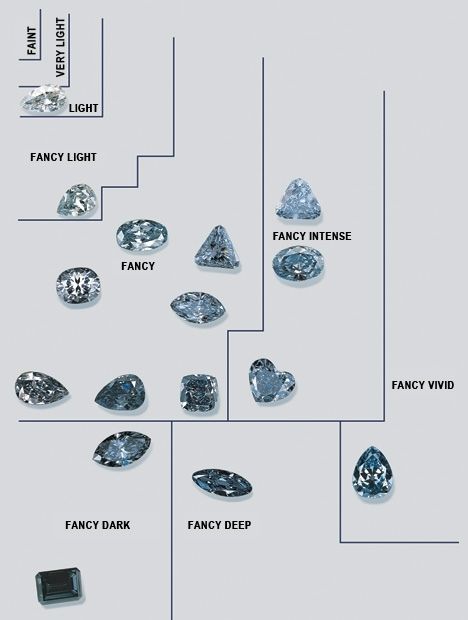
Image Courtesy of GIA
You may also see blue diamonds referred to by type, for example, type IIb (the most common categorization for blue diamonds.
In simple terms, these classifications can be determined as follows:
Blue Diamonds Ib: Radiation is not transmitted below 300 nm. Semi-conductive.
Blue Diamonds IIb: UV Transmitted down to 230 nm.
Blue Diamonds Ia: Green/blue diamonds that owe their color to natural radiation.
Blue Diamonds IIa: Grey-blue to grey-violet diamonds that owe their color to the presence of hydrogen.
As a buyer, these classifications are not of much significance – most blue diamonds on the market are IIb – but if it is the scientific aspect of diamonds that intrigues you, you will find plenty to discover in the blue diamond category.
Common secondary colors in blue diamonds include greenish-blue and greyish-blue. A pure blue diamond with no modifiers is extremely rare and thus they tend to be the most sought after by collectors. However, all blue diamonds are rare, and some color combinations create unique and striking diamonds in their own right. For buyers (as opposed to collectors) much of the decision will be based on budget and personal preference.
As blue diamonds are so rare, you won’t find large online inventories as you do for colorless diamonds. Nevertheless, James Allen and Blue Nile both sell blue diamonds, complete with high-res imaging, certification, and user-friendly color charts. You might be searching for a while, but blue diamonds are certain to complete any jewelry enthusiast’s collection.
If you’re looking to buy loose diamonds online, use our special tools to reveal the best cut quality diamonds! Start your diamond search and choose from over a million loose diamonds for sale. Use our filters to find either natural or lab diamonds, as well as fancy color diamonds.
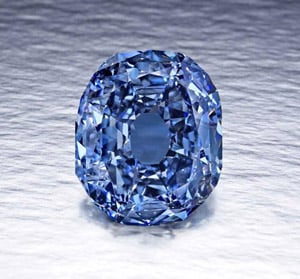
(Image Source: Smithsonian)
31.06-carat “Wittelsbach-Graff” diamond
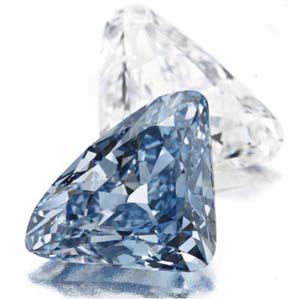
(Image Source: Christie’s)
10.95 carat “Bulgari Blue” Diamond
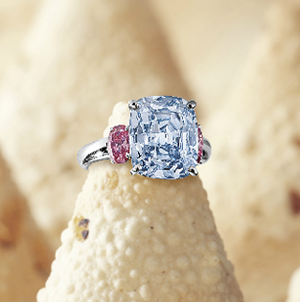
(Image Source: Sotheby’s)
6.01 carat Fancy Vivid Blue Diamond Ring
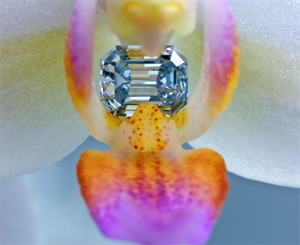
(Image Source: PS Member, kenny)
.28ct fancy intense blue diamond
Have more questions about fancy colored diamonds? Click on the links below or visit our Fancy Colored Diamond Guide.
Fancy Colored Diamond Introduction, Yellow Diamonds, Brown Diamonds, Pink Diamonds, Blue Diamonds, Green Diamonds, Black Diamonds, Red Diamonds, Orange Diamonds
Featured photo credit: Christys.com
Get fast answers to any question: Ask our community of unbiased independent helpers.
Ready to find your diamond?
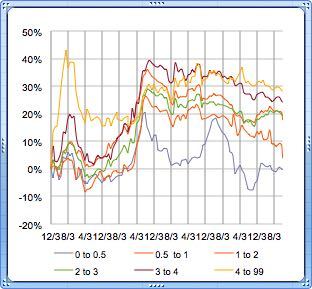
Retail Diamond Prices Chart Updated Monthly.

Two Paths, One Diamond Not all diamonds come from the same place — but they all start the same way. Pure carbon, crystalized under immense pressure and heat. Whether it…
A Wedding Ring as Unique as Your Love Finding the right wedding ring isn’t just about diamonds or gold – it’s about finding the one that feels right. With hundreds…
So, you’re thinking about lab-grown diamonds? Smart move. They’re just as sparkly as the natural kind but usually cost less. But where do you actually go to buy them? It…

Want to stay updated on the most recent blogs, forum posts, and educational articles? Sign up for Bling News, PriceScope’s weekly newsletter.